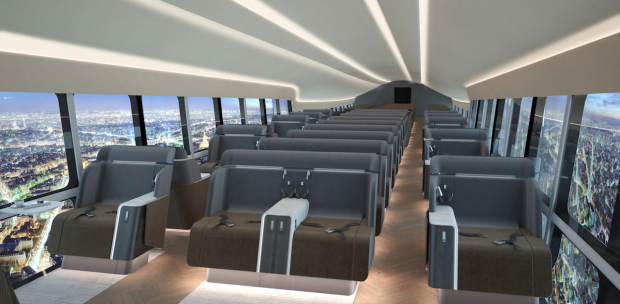
Breaking News
6.8 SPC vs. 300 Blackout: Powering Up the AR Platform
 Autism Study By McCullough Foundation Begins New Era of Free Scientific Inquiry
Autism Study By McCullough Foundation Begins New Era of Free Scientific Inquiry
 REVOLUTION DAY 8: Libertarians JOIN The Revolution
REVOLUTION DAY 8: Libertarians JOIN The Revolution
 US Government and Westinghouse $80bn Nuclear Reactor Deal
US Government and Westinghouse $80bn Nuclear Reactor Deal
Top Tech News
 Graphene Dream Becomes a Reality as Miracle Material Enters Production for Better Chips, Batteries
Graphene Dream Becomes a Reality as Miracle Material Enters Production for Better Chips, Batteries
 Virtual Fencing May Allow Thousands More Cattle to Be Ranched on Land Rather Than in Barns
Virtual Fencing May Allow Thousands More Cattle to Be Ranched on Land Rather Than in Barns
 Prominent Personalities Sign Letter Seeking Ban On 'Development Of Superintelligence'
Prominent Personalities Sign Letter Seeking Ban On 'Development Of Superintelligence'
 Why 'Mirror Life' Is Causing Some Genetic Scientists To Freak Out
Why 'Mirror Life' Is Causing Some Genetic Scientists To Freak Out
 Retina e-paper promises screens 'visually indistinguishable from reality'
Retina e-paper promises screens 'visually indistinguishable from reality'
 Scientists baffled as interstellar visitor appears to reverse thrust before vanishing behind the sun
Scientists baffled as interstellar visitor appears to reverse thrust before vanishing behind the sun
 Future of Satellite of Direct to Cellphone
Future of Satellite of Direct to Cellphone
 Amazon goes nuclear with new modular reactor plant
Amazon goes nuclear with new modular reactor plant
 China Is Making 800-Mile EV Batteries. Here's Why America Can't Have Them
China Is Making 800-Mile EV Batteries. Here's Why America Can't Have Them
Airship Maker: Passengers Will Choose Comfort over Speed

Hybrid Air Vehicles (HAV) says its hybrid-electric Airlander 10 airship is on track to be ready to carry up to 100 passengers on regional airline services beginning in 2025. Newly released cabin concepts show possible configurations ranging from a spacious 10-seat layout for luxury tours or on-demand urban air mobility services to higher-density versions for scheduled city-to-city operations.
The UK-based company says the aircraft will be able to support airline routes of up to around 230 nm. However, with a top speed of around 75 knots, the Airlander 10 will be significantly slower than conventional aircraft. Nevertheless, HAV believes it can be competitive by offering passengers the chance to completely bypass airports to fly directly from one downtown location to another, taking off from seafronts, docks, or any flat surface on land.
In some cases, HAV says, the Airlander would generate 75 percent lower CO2 emissions than alternative means of transportation. The company aims to offer an all-electric version of the airship by 2030.

 China Innovates: Transforming Sand into Paper
China Innovates: Transforming Sand into Paper

